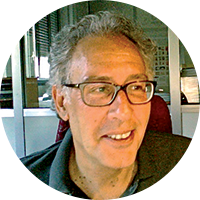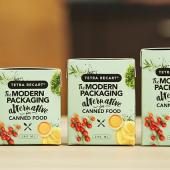More haste, less speed

Editorial by Stefano Lavorini
“Hurry up slowly”, said Svetonio, and personally, I would add, without artifice or ornament: this seems to be the invitation that CONAI has made to Italian industry for the tenth edition of Ecopack, the Eco-friendly packaging competition aimed at awarding, with 600,000 euros, the most innovative and eco-sustainable packaging solutions issued on the market in the 2021-2022 two-year period.
Again this year, in fact, as member of the Extended Technical Committee composed of external experts, I’ve had the opportunity to examine several hundred cases validated through the CONAI* Eco Tool, as well as selected by a technical committee composed of figures from the consortia system, with the task of choosing the five super-awards of 10,000 euros each.
Before outlining a number of general trends, I feel it is my duty to acknowledge the winners:
- Use of recycled material: Conserve Italia Soc. Coop. Agricola for the “Bottiglia in vetro per passata di pomodoro” (Glass bottle for tomato puree);
- Recycling facilitation: Crocco Spa for the “Cappuccio elastico per confezionamento pallet - Stretch Hood ECO” (Elastic cap for pallet packaging - Stretch Hood ECO);
- Reuse: Davines Spa for the “Sublime skin Intensive Serum”;
- New applications/technologies: Fontaneto srl for the “Sacchetto per pasta fresca Raviolo del plin” (Bag for fresh Raviolo del plin pasta);
- New applications/technologies: Italsilva Commerciale srl for the “Ecoricarica lavatrice marsiglia 29 lav. 1305 ml” (Marseille washing-machine eco-recharge: 29 washes. 1305 ml).
In addition, a special mention regarding e-commerce was assigned to Nakuru srl for “Nakpack® Extreme”. Due credit to all these companies, therefore. But what to say of the others?
Plastic vs Paper
The “migration” of plastic packaging to paper packaging has continued, or rather, strengthened again this year. This trend concerns a lot of virgin plastic packaging which could, however, have been advantageously replaced by recycled plastic packaging. It is worth mentioning, moreover, some perplexity arising in cases in which virgin or recycled plastic is replaced by C-type cellulose-based polylaminates, or packaging in which the paper component is greater or equal to 60% but less than 80%, the recycling of which is complex and costly: it is estimated that out of 100 kg of packaging, more than 60 kg becomes non-recyclable waste at the current state of technologies.
In practice, it really seems, at times, that we are faced with marketing actions (or, better, “greenwashing”) rather than solutions aimed at improving environmental efficiency.
Regenerated plastic and mono-materials
Trends in the plastic packaging field are more concrete and promising. Here there is a drastic reduction in thicknesses (almost cancelling the difference between rigid, semi-rigid and flexible packaging), as well as a growing use of recycled polymers (up to 100%) in numerous applications, also in the food sector.
With regards to flexible packaging, mono-material barrier solutions replacing multi-material ones with AL, EVOH, EVA, PA are clearly growing, and this is thanks to the improvement in performances guaranteed by ad hoc adhesives and lacquers (which I hope will be highlighted in product sheets in future). In this context, however, I was struck by a few cases in which the new adopted solution is so far from the previous one so as to give rise to some doubts: in other words, it has either been decided to reduce the shelf-life of the product, or the previous packaging was ridiculously oversized in relation to food protection needs.
For reasons of space, I’ll stop here. I’d just like to add that there are still few cases of the designing of packaging in view of logistical needs and also of the reuse of packaging at least in B2B contexts. I promise, however, to draw up a more detailed mapping of what the CONAI monitored market has to offer, in order to try to have a reliable overview of the future developments that await us.
*The CONAI Eco Tool is a simplified Life Cycle Assessment instrument, able to calculate the effects of prevention actions in terms of energy saving, water saving and reduction in CO2 emissions, besides (only for packages that facilitate recycling activities) the quantity of secondary raw material generated. CONAI’s Eco Tool and the analysis of cases have again this year been subject to validation by DNV, the international certifying entity.



















